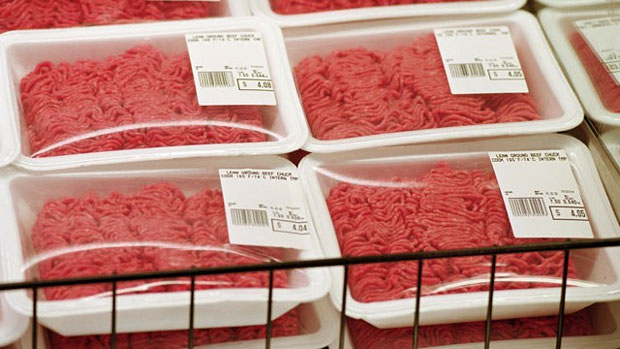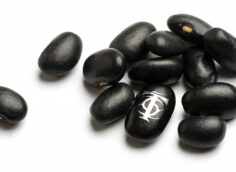When it comes to building muscle or performing at your peak athletically, nutrition is 50% of the equation. Or is it 75%? Maybe 90%? Whatever. It's, like, really important, okay? In this Q & A column, T-Nation contributor Mike Roussell answers all your questions about the stuff at the end of your fork.
Probiotics: A Million Hippies Can't Be Wrong
Q: I'm hearing a lot about probiotics lately. What are they? Do they work?
A: Probiotics are definitely hot. This category of supplements, which was once confined to the shelves of natural food stores run by flower children, has recently become so popular and mainstream that yogurt giant Dannon has released their own probiotic containing product: Activia.
 |
No, you don't put the yogurt in your bellybutton.
You can also find cottage cheese in the supermarket that advertises "live cultures" (usually L. acidophilous and B. bifidus). Always pick these over other brands. But for some people, diary products with live cultures aren't enough.
If you think about it, purchasing probiotic supplements seems a little strange because what you're buying is bacteria. For the most part, the word bacteria has a negative connotation, but the little buggers ain't all bad. The human gut contains over 500 million different species of bacteria. These bacteria have a myriad of different functions, from food digestion to vitamin production to enhancement of immune function.
Unfortunately, the state of agriculture and diet in this country has led to alarmingly high rates of intestinal problems ranging from Crohn's disease to the various mysterious forms of inflammatory bowel syndrome. Many people believe that all these intestinal problems are due to a disruption in the intestinal flora (a fancy term for healthy bacteria in the gut). This is where probiotics come in.
 |
Probiotics have been shown to prevent or reduce the severity of inflammation in the GI tract. They do this through a few different mechanisms:
1. They decrease the production pro-inflammatory cytokines.
2. They stimulate the production of IgA. (This is part of the body's first line of defenses against bad bacteria, fungus, viruses, etc.).
3. Probiotics occupy binding sites in the gut preventing the binding of bad bacteria.
The immune system benefits of probiotics would be helpful to just about anyone. Probiotics can also have more individual applications. For example, they've been shown to aid in the treatment and/or prevention of antibiotic-associated diarrhea (AAD). This form of diarrhea is seen all the time in hospitals, affecting up to 39% of patients receiving antibiotics. But it also plagues many non-hospitalized people who undergo a strong antibiotic regimen.
 |
Basically, the antibiotics you take for your illness wipe out the bad bacteria causing the problems in your body. But since many antibiotics are designed like H-Bombs and destroy both good and bad bacteria, your GI tract is left unprotected by the good guys. This allows for bad bacteria to take residence and you end up with a case of AAD. Probiotics can help re-inhabit your GI with good bacteria before chaos ensues.
One of my favorite benefits of supplementing with probiotics is their positive effect on lactose absorption. Lactose intolerance is becoming a bigger and bigger problem. Supplemental probiotics can help in the digestion of lactose, which makes eating dairy products much more enjoyable. I'm not promising that you'll be able to pop a probiotic and then drink a gallon of milk with no consequences, but it'll help bloating and other symptoms associated with moderate dairy consumption.
 |
Probiotics are like any other supplement in that you need to be educated when looking to make a purchase. There are many types of bacteria, brands, and several problems that you need to consider when making a purchase.
Your gastrointestinal tract is a rough place. It has to be to protect against nasty pathogens and bacteria. Unfortunately, you can't tell your body, "Okay, I'm going to eat some healthy bacteria now so don't kill them." It doesn't work that way.
The first problem you run into with supplemental probiotics is survival through the treacherous and acidic environment of the stomach. You can get around this problem in two different ways. First, certain strains of bacteria weather the storm of the stomach better than others. The most resilient strains are:
• L. acidophilus strains 2401, 2409, and 2415
• B. longum strain 1941
• Bifidobacterium pseudolongum strain 20099
While that's well and good, many companies don't list the strain numbers on the side of the bottle.
Option two may be the better bet: buy enterically coated probiotics. "Enterically coated" means that the capsule you swallow won't open up and spill its contents until it leaves the stomach and enters the small intestine (where the pH is more friendly).
You'd think that once the bacteria enter the small intestine everything is good, right? Wrong. The next obstacle is bile.
Bile is a substance released by the gallbladder containing digestive enzymes, food emulsifiers, and other goodies that make digestion possible. Fortunately, numerous studies have shown (in vivo and in vitro) that probiotics can survive in the small intestine when exposed to bile. Like with the stomach, certain strains survive better than others. Instead of getting into the gritty details of bacterial strains, just make sure to purchase a product that contains a blend of bacteria.
Also, researchers agree that for probiotics to be truly effective they need to stick to the walls of your intestines. Unfortunately, studies have shown that supplemental bacteria don't stick very well. So to get the effect you need to take them continuously. Luckily, many people can get away with only taking probiotics when symptoms arise, so this isn't a huge problem. Because the bacteria from probiotics don't stick to your gut very well if you have chronic symptoms, taking probiotics every one to two days may be your best option.
 |
In short, probiotics work. As I discussed above, there are several obstacles that this friendly bacteria needs to overcome, but a savvy supplement consumer can do this with no problem. Here's a quick summary:
1. You may want to consider taking probiotics if you're chronically bloated with gas and/or suffer from diarrhea. Most people could benefit from the immune system boost that probiotics provide, especially during cold and flu season and/or periods of very intense training or dieting.
2. To ensure maximum survival, purchase an enterically coated version that has a variety of bacteria strains.
3. Take your probiotics on an empty stomach or with dairy products. Taking them on an empty stomach will reduce the level of bile in the small intestine. Dairy products are believed to help maintain the effectiveness of the bacteria as they travel the digestive tract.
4. Discontinue use of the probiotics after your symptoms go away. I've found that they can be very successful in controlling GI flare-ups and most people can have success with periodic use.
 |
Which one should you buy? I like Primadophilus Optima by Nature's Way. It's enterically coated and contains 14 different strains of bacteria.
Fatty Acids and Fish
Q: Fatty-acid wise, is there a difference between farm raised fish and wild salmon?
A: Yes, there is a difference – a big one. Fish are sort of like people in that they don't magically make boatloads of the highly beneficial omega-3 fatty acids EPA and DHA. Like us, fish get a large portion of their EPA/DHA from their diet. Algae synthesize EPA/DHA, fish eat the algae, and we eat the fish.
As you can imagine, once fish are brought into the controlled farming situation, the game changes. The fish have to rely more heavily on long chain omega-3 synthesis and the quality of their feed.
 |
Let's continue the comparison between fish and people and look at another similarity – food. Americans are pumped full of cheap omega-6-laden grub, as are farmed salmon. Fish farming, like any other business, is a numbers game. If a farmer gives his fish omega-3 rich feed, it's going to cost him more. So like General Mills and Kraft, salmon farmers usually opt for the inexpensive, health deteriorating, omega-6-loaded food option.
How bad is it? Here's a comparison of the fatty acid profile of raw wild Atlantic salmon vs. farmed Atlantic salmon (100 grams):
|
Fatty Acid |
Wild (g) |
Farmed (g) |
n-3/n-6 |
|
Linoleic Acid (LA) |
0.172 |
0.586 |
n-6 |
|
Alpha-Linolenic Acid (LNA) |
0.295 |
0.094 |
n-3 |
|
Arachidonic Acid (AA) |
0.267 |
1.152 |
n-6 |
|
Eicosapentaenoic (EPA) |
0.321 |
0.618 |
n-3 |
|
Docosahexaenoic Acid (DHA) |
1.115 |
1.293 |
n-3 |
|
Total n-3 |
1.731 |
2.005 |
|
|
Total n-6 |
0.439 |
1.738 |
|
|
Ratio n-3:n-6 |
3.9 |
1.2 |
As you can see, the differences in fatty acid profile between the two types of salmon is staggering.
Now, initially you might argue that research shows the ideal ratio of omega-6/omega-3 in a person's diet should be between 1:1 and 3:1, and even farmed raised salmon give you that ratio (n-6:n-3 = 0.9). The problem is that salmon, for most people, is a "catch-up" food. Since our diets are so heavily laden with omega-6 fatty acids, we need foods that are heavily laden with omega-3 fatty acids to achieve the proper ratio. Farm raised salmon doesn't have the omega-3 power to do that like wild salmon does.
 |
Is there flax in that feed?
It gets worse. The deterioration of farm raised salmon's fatty acid profile is a huge disappointment and in a way negates the benefits of eating salmon, but this isn't even the big problem. The real problem with farm raised salmon is the high concentration of deadly contaminants.
In 2004, a comprehensive study looking at the differences in contamination between farm raised and wild salmon was released. The results were definitive and eye-opening. Seven hundred salmon (~2 metric tons) from Europe, North America, and South America were examined. The researchers tested the salmon for 14 organochlorine contaminants including PCBs, dioxins, toxaphene, and dieldrin.
The farm raised salmon from Europe and North America contained significantly higher levels of all 14 contaminants compared to the wild salmon. The farm raised salmon from South America contained significantly higher levels of six of the 14 contaminants including PCBs, dioxins, dieldrin, and DDT.
The researchers also did a focused analysis of PCB, dioxin, toxaphene, and dieldrin contamination (due to the well-documented health risks with these contaminants). The scientists found that the salmon farmed in Scotland and the Faroe Islands (between Iceland and Scotland) contained the highest levels of these toxins while the salmon farmed in Chile and Washington State had the lowest.
Because the levels of contamination in the farmed fish were below EPA levels, some scientists didn't believe the findings in this study warranted any change in food selection. "In my view, the study says we should be eating more farmed salmon," says toxicologist Charles Santerre of Purdue University.
Others, myself included, believe differently. "The punch line is that eating the wrong kind of fish has real dangers," says David Carpenter of the State University of New York, Albany.
Now, most athletes should be looking to consume 2-3g of EPA/DHA a day to maintain optimal health and keep inflammation under control. If you're trying to get all this from farm raised salmon, you're a fool (at least if you continue to do so after reading this article). You're a fool for two reasons:
1. The ratio of omega-6:omega-3 in farm raised salmon is poor and you'll never be able to achieve an optimal omega-6:omega-3 ratio in your overall diet.
2. In order to get that much EPA/DHA in your diet, you'll end up consuming dangerously high levels of some serious toxins, which puts your health at risk.
So what's the better option? Wild salmon and supplementation. If you just love salmon and want to eat it on a regular basis then you should start eating wild salmon.
 |
The authors of the salmon comparison study recommend that people don't eat more than one or two servings of farm raised salmon a month. I'm a huge fan of having people eat more whole foods, but to get adequate amounts of EPA/DHA you just can't get around not taking a high quality, highly purified fish oil supplement (plus it's waycheaper than trying to eat wild salmon everyday).
 |
Flavor Up That Hunk O' Protein
Q:I eat a ton of chicken and other meats. I need the protein but I get bored quickly. Any healthy recipe ideas?
A:You bet! Try this tasty fall sauté. Okay, I know it isn't fall yet, but this quick sauté is great any time of the year (zucchini and squash are just the best in the fall) Zucchini are a great vegetable that shouldn't be overlooked. They have a great flavor and are a good source of potassium, folate, and beta-carotene.
What You Need
2 small green zucchini (~400g)
1 small yellow zucchini (~200g)
2 cloves garlic
1 medium onion
1 tbsp olive oil (1 tsp virgin and 2 tsp extra virgin, if you want to get real picky)
1 tsp dried oregano
3 basil leaves
1 pinch of salt and pepper
Time: 10-12 minutes
Servings: 1
Mince garlic and heat in nonstick pan on medium heat along with 1 tsp olive oil, dried oregano, and a pinch of salt and pepper. Next, half and thinly slice the onion. Add onions to the pan and let cook (three minutes). Cut the zucchinis in half length-wise and then slice to give you half circles. Now add the zucchini and let cook until it softens (5-7 minutes). Toss zucchini/onion sauté, chopped basil leaves, and remaining olive oil in a bowl and serve.
 |
If you're grilling, just put all the ingredients, except the fresh basil and 2 tsp olive oil, into a sealed tinfoil pouch and place on the grill to cook next to whatever hunk of protein you're having. When it's done cooking, add the remaining olive oil and basil leaves as instructed above. This goes great with anything Italian or roasted/smoked chicken.
Note: If you're going to use dried basil instead of fresh, then add it into the sauté with the oregano so it can hydrate and the flavors will have time to come out.
Nutritional Facts
Calories – 244kcal
Carbohydrates – 25g
Fiber – 8g
Protein – 7g
Fat – 14g
Saturated – 1.8g
Monounsaturated – 9.95g
Polyunsaturated – 1.13g
References
1. Ishibashi, N. and S. Yamazaki, Probiotics and safety. Am J Clin Nutr, 2001. 73(2): p. 465S-470.
2. Bezkorovainy, A., Probiotics: determinants of survival and growth in the gut. Am J Clin Nutr, 2001. 73(2): p. 399S-405.
3. Senok, A.C., A.Y. Ismaeel, and G.A. Botta, Probiotics: facts and myths. Clinical Microbiology and Infection, 2005. 11(12): p. 958-966.
4. Vanderhoof, J.A., Probiotics: future directions. Am J Clin Nutr, 2001. 73(6): p. 1152S-1155.
5. Hites, R., et al., Global Assessment of Organic Contaminants in Farmed Salmon. Science, 2004. 303: p. 226-229.
6. Foran, J., et al., Risk-Based Consumption Advice for Farmed Atlantic and Wild Pacific Salmon Contaminated with Dioxins and Dioxin-like Compounds. Environmental Health Perspectives, 2005. 113(5): p. 552-556.




